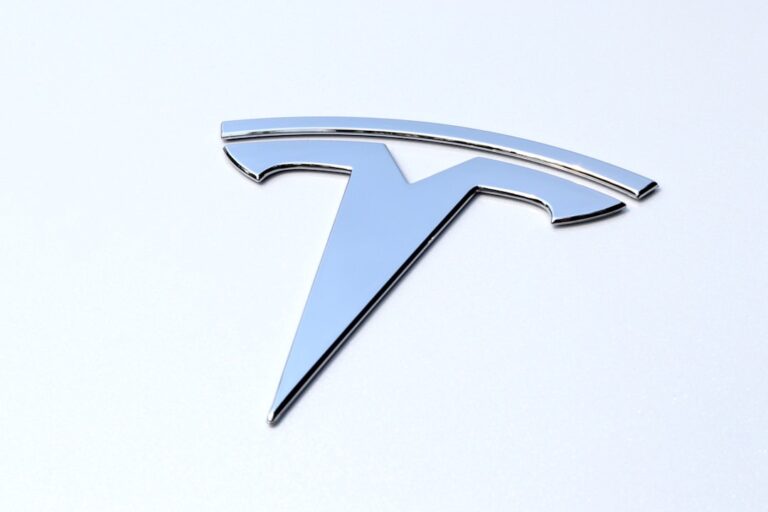
Tesla, Inc., a name synonymous with electric vehicles (EVs) and sustainable energy solutions, has become a significant player in the stock market, particularly under its ticker symbol TSLA on the NASDAQ exchange. Founded in 2003 by engineers Martin Eberhard and Marc Tarpenning, and later led by the visionary Elon Musk, Tesla has transformed from a niche automaker into a global powerhouse. The company’s mission to accelerate the world’s transition to sustainable energy has resonated with investors, leading to a meteoric rise in its stock price over the years.
As of October 2023, Tesla’s market capitalization has reached staggering heights, making it one of the most valuable companies in the automotive sector and beyond. Tesla’s journey on the stock market has been marked by volatility, innovation, and a fervent following among retail investors. The company’s initial public offering (IPO) in June 2010 priced shares at $17, but the stock has since experienced exponential growth, reflecting both the company’s achievements and the broader trends in technology and sustainability.
Investors are drawn not only by Tesla’s financial performance but also by its potential to disrupt traditional automotive markets and lead the charge toward renewable energy solutions. This article delves into Tesla’s stock market performance, the factors influencing its price, analyst predictions, and the challenges it faces as it continues to innovate and expand.
Key Takeaways
- Tesla (NASDAQ: TSLA) is a leading electric vehicle and clean energy company founded by Elon Musk.
- Tesla’s stock has experienced significant growth and volatility, with a market capitalization surpassing traditional automakers.
- Factors affecting Tesla’s stock price include production numbers, delivery targets, competition, and regulatory changes.
- Analyst predictions for Tesla’s stock vary, with some bullish on its potential for growth and others cautious about its valuation.
- Tesla’s innovation in electric vehicles, energy storage, and solar technology positions it for future growth, but it also faces risks and challenges in production and competition.
Tesla’s Performance on the Stock Market
Exceptional Growth in 2020
For instance, in 2020 alone, Tesla’s stock price increased by over 700%, driven by a combination of strong sales figures, inclusion in the S&P 500 index, and growing investor enthusiasm for electric vehicles.
Tangible Growth and Investor Confidence
This surge was not merely a reflection of market speculation; it was underpinned by tangible growth in vehicle deliveries and revenue. In recent years, Tesla has consistently reported increasing revenues and profits, which have further fueled investor confidence. The company’s ability to scale production at its Gigafactories in Nevada, Shanghai, Berlin, and Texas has allowed it to meet rising demand for its vehicles.
Record Deliveries and Market Leadership
In Q2 2023, Tesla reported record deliveries of over 466,000 vehicles, showcasing its ability to navigate supply chain challenges while maintaining growth. This performance has solidified Tesla’s position as a leader in the EV market and has contributed to its stock price resilience even amid broader market fluctuations.
Factors Affecting Tesla’s Stock Price

Several factors influence Tesla’s stock price, ranging from macroeconomic conditions to company-specific developments. One of the most significant drivers is the overall demand for electric vehicles. As governments worldwide implement stricter emissions regulations and offer incentives for EV purchases, consumer interest in electric vehicles has surged.
This trend is bolstered by increasing environmental awareness among consumers and advancements in battery technology that enhance vehicle range and performance. Consequently, any news related to EV adoption rates or government policies can have an immediate impact on Tesla’s stock price. Another critical factor is Tesla’s production capabilities and supply chain management.
The company’s ability to ramp up production efficiently is vital for meeting demand and achieving profitability targets. Disruptions in supply chains, such as semiconductor shortages or raw material constraints, can adversely affect production timelines and delivery schedules. For example, during the COVID-19 pandemic, many automakers faced significant challenges due to factory shutdowns and supply chain disruptions.
Tesla managed to navigate these challenges relatively well compared to competitors, which helped maintain investor confidence. However, any future disruptions could lead to fluctuations in stock performance.
Analyst Predictions for Tesla’s NASDAQ TSLA
| Date | Analyst | Prediction |
|---|---|---|
| Jan 2021 | Morgan Stanley | Target price of 810 |
| Feb 2021 | Goldman Sachs | Upgrade to Buy rating |
| Mar 2021 | JP Morgan | Price target of 900 |
Analyst predictions regarding Tesla’s stock often reflect a wide range of opinions, influenced by varying assessments of the company’s growth potential and market conditions. Some analysts remain bullish on Tesla’s prospects, citing its leadership position in the EV market and ongoing innovations in battery technology and autonomous driving capabilities. For instance, analysts from firms like Wedbush have set ambitious price targets for TSLA shares based on projected increases in vehicle deliveries and expansion into new markets.
Their optimistic outlook is often supported by data indicating strong consumer demand for Tesla’s products. Conversely, some analysts express caution regarding Tesla’s valuation relative to traditional automakers. They argue that while Tesla has achieved impressive growth, its stock price may be overinflated compared to earnings metrics.
Concerns about competition from established automakers entering the EV space also contribute to this skepticism. As more companies invest heavily in electric vehicle technology and infrastructure, analysts warn that Tesla may face increased pressure on market share and profit margins. This divergence in analyst opinions creates a dynamic environment for investors considering whether to buy or sell TSLA shares.
Tesla’s Innovation and Future Growth
Innovation is at the core of Tesla’s business strategy and is a significant driver of its future growth potential. The company has consistently pushed the boundaries of technology with advancements in battery design, software integration, and manufacturing processes. For example, Tesla’s development of the 4680 battery cell promises to enhance energy density while reducing costs, which could significantly impact vehicle pricing and profitability.
Additionally, Tesla’s focus on vertical integration allows it to control more aspects of its supply chain, further enhancing efficiency and reducing reliance on external suppliers. Moreover, Tesla is not solely focused on automotive innovation; it is also making strides in energy solutions through products like solar panels and energy storage systems. The integration of these technologies positions Tesla as a holistic provider of sustainable energy solutions rather than just an automaker.
As global demand for renewable energy sources continues to rise, Tesla’s expansion into energy products could provide substantial revenue streams beyond vehicle sales. This diversification strategy is crucial for long-term growth as it mitigates risks associated with reliance on a single product line.
Risks and Challenges for Tesla’s Stock

Regulatory Scrutiny and Safety Concerns
As a high-profile company in the automotive sector, Tesla is under constant scrutiny regarding its manufacturing practices and product safety. Regulatory actions or negative findings could lead to reputational damage and financial penalties, ultimately affecting investor sentiment.
Intensifying Competition in the EV Market
Competition is intensifying as traditional automakers such as Ford, General Motors, and Volkswagen, as well as newer entrants like Rivian, invest heavily in electric vehicle technology and infrastructure. This increased competition could lead to pricing pressures that may impact Tesla’s profit margins.
Maintaining Market Share in a Crowded Market
As more players enter the market with innovative features or competitive pricing strategies, maintaining market share will become increasingly challenging for Tesla. The company must adapt to these changes to remain competitive and protect its market position.
Comparing Tesla’s NASDAQ TSLA to Competitors
When evaluating Tesla’s performance on NASDAQ TSLA, it is essential to consider how it stacks up against competitors in the electric vehicle space as well as traditional automakers transitioning to electric models. Companies like Ford have made significant strides with their electric offerings such as the Mustang Mach-E and F-150 Lightning, which have garnered positive reviews and consumer interest. Similarly, General Motors has committed to an all-electric future with plans to release numerous EV models over the next few years.
In contrast to these competitors, Tesla maintains a first-mover advantage with its established brand recognition and extensive charging infrastructure through its Supercharger network. This network provides a significant competitive edge by alleviating range anxiety for consumers considering an electric vehicle purchase. However, as competitors expand their own charging networks and improve their EV offerings, this advantage may diminish over time.
Moreover, traditional automakers often have more extensive resources at their disposal due to established manufacturing capabilities and supply chains. This financial strength allows them to invest heavily in research and development while also offering competitive pricing strategies that could challenge Tesla’s market position.
Should You Invest in Tesla’s NASDAQ TSLA?
Investing in Tesla’s NASDAQ TSLA presents both opportunities and challenges that potential investors must carefully consider. The company’s innovative approach to electric vehicles and sustainable energy solutions positions it well for future growth amid increasing global demand for environmentally friendly technologies. However, investors should remain cognizant of the risks associated with regulatory scrutiny, intensifying competition, and potential supply chain disruptions.
Ultimately, whether one should invest in TSLA depends on individual risk tolerance and investment strategy. For those who believe in the long-term potential of electric vehicles and sustainable energy solutions, Tesla may represent an attractive investment opportunity despite its volatility. Conversely, more risk-averse investors may prefer to wait until there is greater clarity regarding competitive dynamics within the automotive sector before committing capital to TSLA shares.
Tesla (NASDAQ: TSLA) has been making headlines recently, with news of their acquisition of a bankrupted automation engineering firm. This move is seen as a strategic one for Tesla as they continue to expand their capabilities in the electric vehicle market. According to tslainvestors.com, this acquisition could potentially give Tesla a competitive edge in the industry. Additionally, the US union chief has called on fund managers to review Tesla’s valuation, as reported by tslainvestors.com. With all this news surrounding Tesla, investors are advised to keep an eye on the stock market volatility and consider investing in AI stocks when prices fall, as suggested in tslainvestors.com.
Check out the latest Tesla products that you purchase right now!
